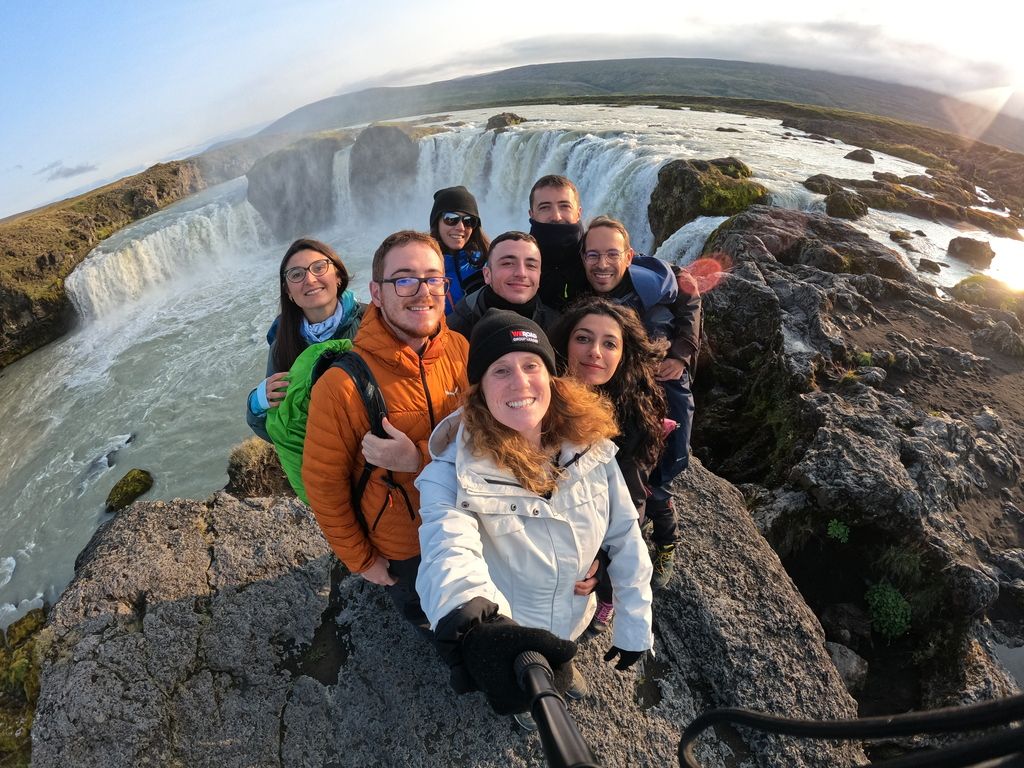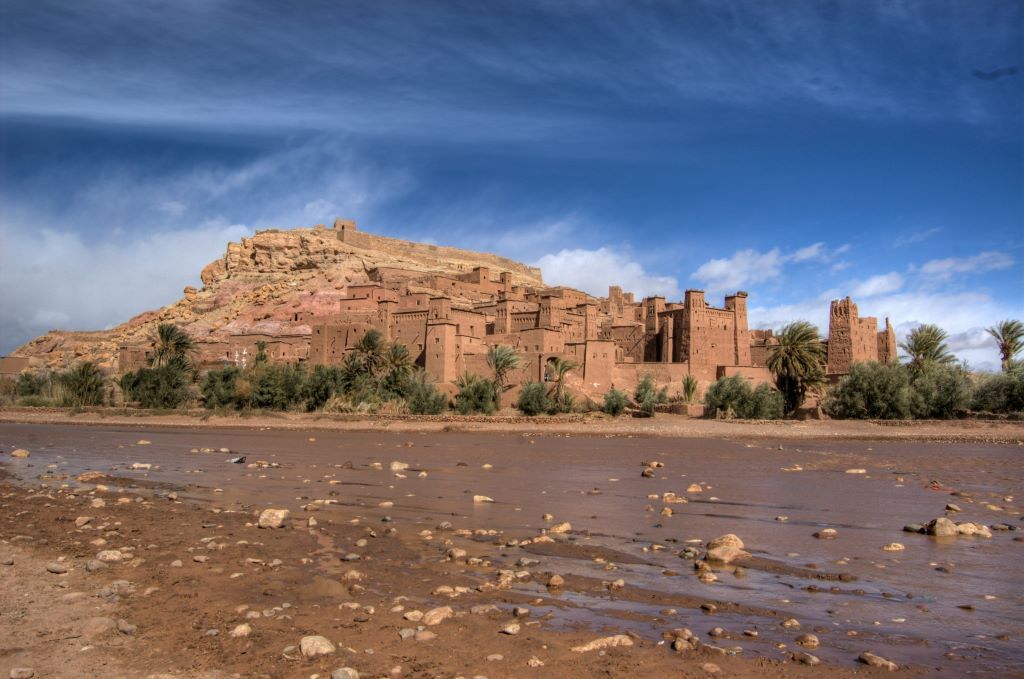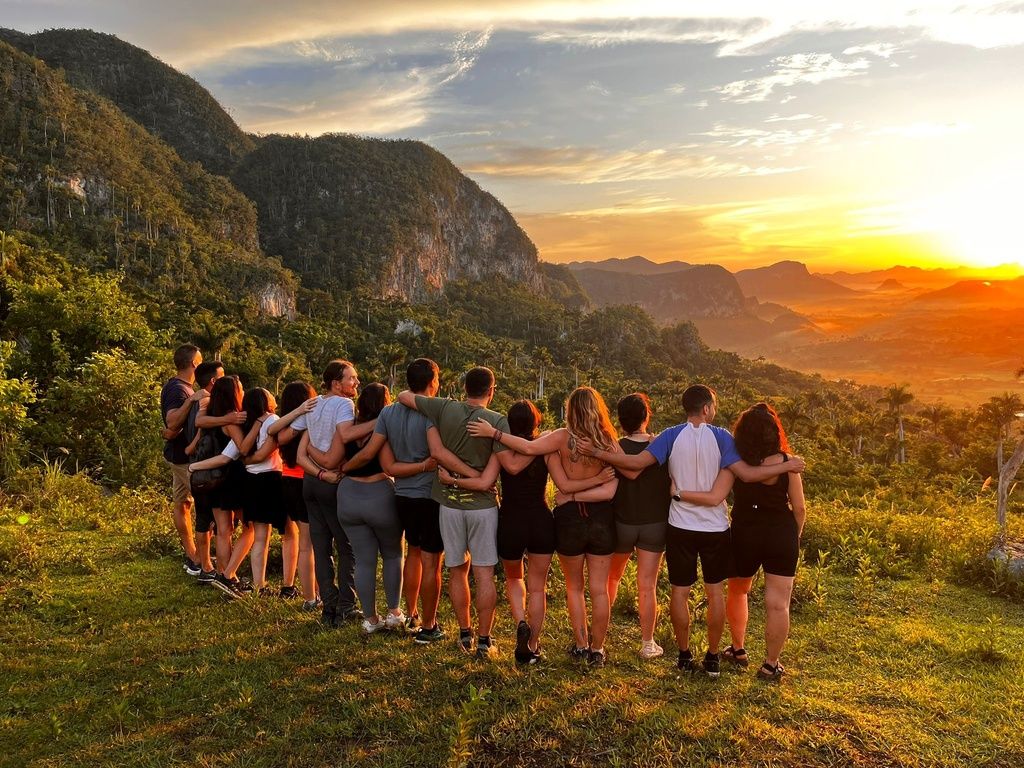

The Westfjords of Iceland are a place of raw natural beauty and spectacular contrasts.
Here, mountains and cliffs plunge directly into deep fjord waters, and rugged landscapes stretch out in near silence. Secluded from the mass tourism of Iceland’s south and west, travelling this remote region reveals the country’s wildest side. The spirit of exploration and the sense of isolation set this corner of Iceland apart. Adventurous travellers come to see waterfalls tumble into sweeping fjords, observe wildlife, visit historic fishing villages, and more. The rewards of the Westfjords far outweigh the challenges. This guide explores the region’s attractions, what to do, when to go, staying safe on roads, and much more. Discover why the Westfjords are Iceland’s ultimate remote adventure.
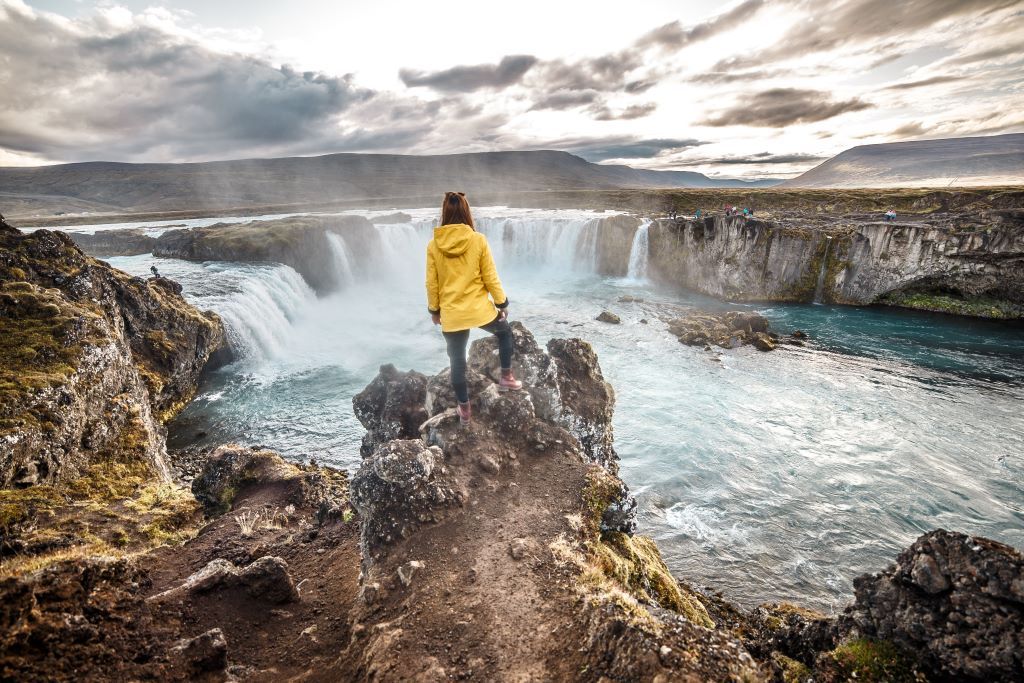
Why visit the Westfjords? understanding Iceland’s remote gem
The western fjords differ greatly in geology and location from southern Iceland or the Snæfellsnes Peninsula. Here, landscapes are older, with cavernous fjords carved over millions of years, towering mountains, steep cliffs, and broad isolation from the rest of the country. Even the farthest reaches feel like the edge of the earth.
This is where nature and wilderness enthusiasts come to explore. The Westfjords are not a Golden Circle day trip. It demands planning and forethought, with rewards in the form of remarkable views, wildlife, and quaint villages reflecting the true Icelandic spirit. The low population density enhances the experience, making endless skies, immense spaces, and random seals on beaches feel like a personal discovery.
Visitors come to watch waterfalls plunge into fjords, hike remote trails, and marvel at the Látrabjarg cliffs, Europe’s largest bird cliffs, home to thousands of puffins in summer. They explore hidden coves, visit geothermal pools, and the historic fishing village of Ísafjörður, the capital and heart of the region. Other towns each offer museums, local history, cuisine, and a glimpse of life in Iceland’s wildest region.
Viewpoints, summer hiking in the Hornstrandir Nature Reserve, puffin watching at Látrabjarg, the Birkhóll zipline, hot tub soaking, golden midnight suns, and traditional villages are just a sample of the adventures awaiting in this awe-inspiring region.
Where are the Westfjords of Iceland?
Because of its remoteness, the Westfjords are a natural wonderland for intrepid travellers. Driving here includes many single-lane roads and hairpin turns, but you avoid the crowds found on the Ring Road. Access is more challenging than in other parts of Iceland, but the journey itself is part of the adventure. Often, you’ll see a seal or other wildlife along the shore.
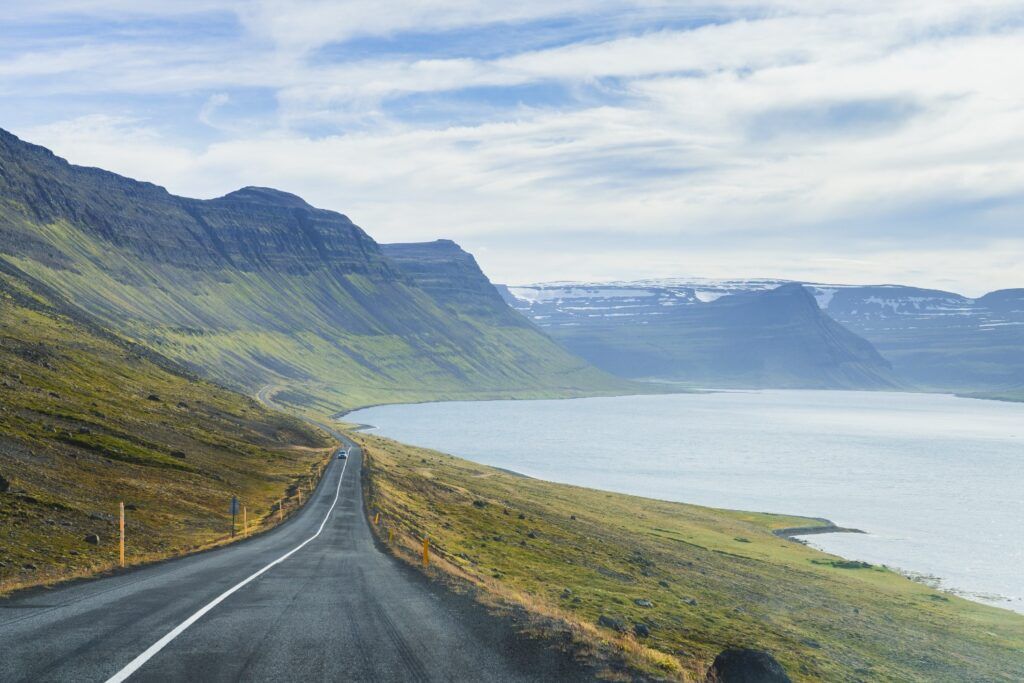
Must-See natural wonders: iconic sights of the Westfjords!
The region is peppered with some of the most stunning natural attractions the country has to offer. From rugged cliffs and wide-open spaces to awe-inspiring narrow fjords and glistening waterfalls, the area is a true wonder of nature. Sitting atop this otherworldly region is the magnificent Dynjandi Waterfall, known as the crown jewel of the Westfjords. Cascading down 100 meters across wide, tiered rocks like a colossal bridal veil, the waterfall sends water through the sharp cliffs. The wide lower steps sparkle in the sun, compelling visitors to stop and admire its power.
It is worth taking a leisurely walk down to the waterfall and admiring the many smaller falls along the way. The golden afternoon light reflecting off the water creates a truly magical sight.
If you find Dynjandi alluring and wish to spend more time there, the campsite is close by. This gives you the chance to fully take in the special kind of serenity that can only be found at the foot of a waterfall! It will also allow you to watch the fjord come to life at sundown and in the morning. In addition, you’ll find convenient footpaths to explore the area, both for novice and experienced hikers. Careful planning has made Dynjandi the Westfjords’ most visited sight! The symbiosis of grandeur, tranquility, and accessibility here is the very definition of a must-see destination.
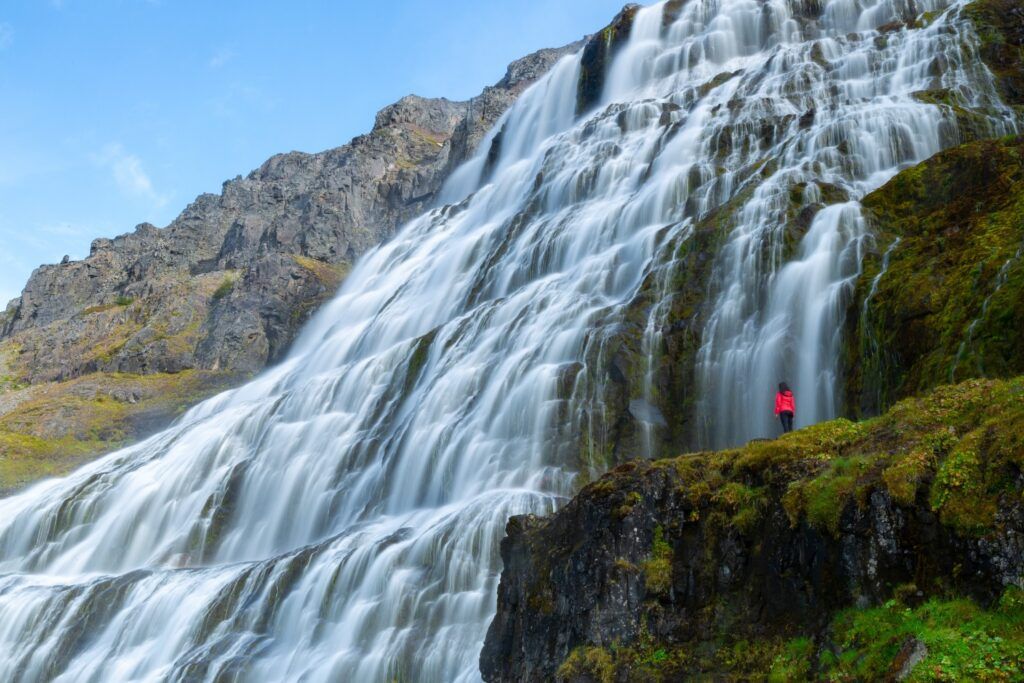
Látrabjarg Cliffs
The Látrabjarg cliffs, Iceland’s westernmost point, are one of the largest bird sanctuaries in the world. They are a must-see destination in the Westfjords, especially for puffin lovers. The towering cliffs drop down to the waves of the Atlantic and arch outwards, giving you an outpost view.
These cliffs are open all day long, but photo opportunities are best in the morning and evening when seabirds return to their nests. Do remember to stay safe. The best time to see the puffins is during the summer nesting season (May to mid-August).
Puffin pictures are allowed, provided you follow the main rules: do not get too close, limit your stay in any area to 15 minutes, do not touch them, and do not take feathers or bones. Returning onshore, puffins are active, making it easier to photograph them. Puffins are very sensitive; if frightened, they may take a long time to return. In addition to puffins, you can see guillemots and razorbills.

Hornstrandir Nature Reserve
The Hornstrandir Nature Reserve is Iceland’s most remote wilderness. You can start your journey by boat from towns like Ísafjörður and Bolungarvík during the summer season. The area is a must-see for nature lovers who enjoy solitude, tranquillity, and true “off-the-beaten-path” adventures — and who are equipped with serious hiking gear.
Recently, the 467-square-kilometre area has become a haven for the Arctic fox. Hikers benefit from observing this beautiful creature, which is a testament to the region’s raw wilderness. Although multi-day, end-to-end hikes are possible, for a safer experience, we advise soaking in the beauty and grandeur by hiking back to your starting point within a single day. Experienced trekkers traverse world-class hiking routes by day with the help of a local guide.
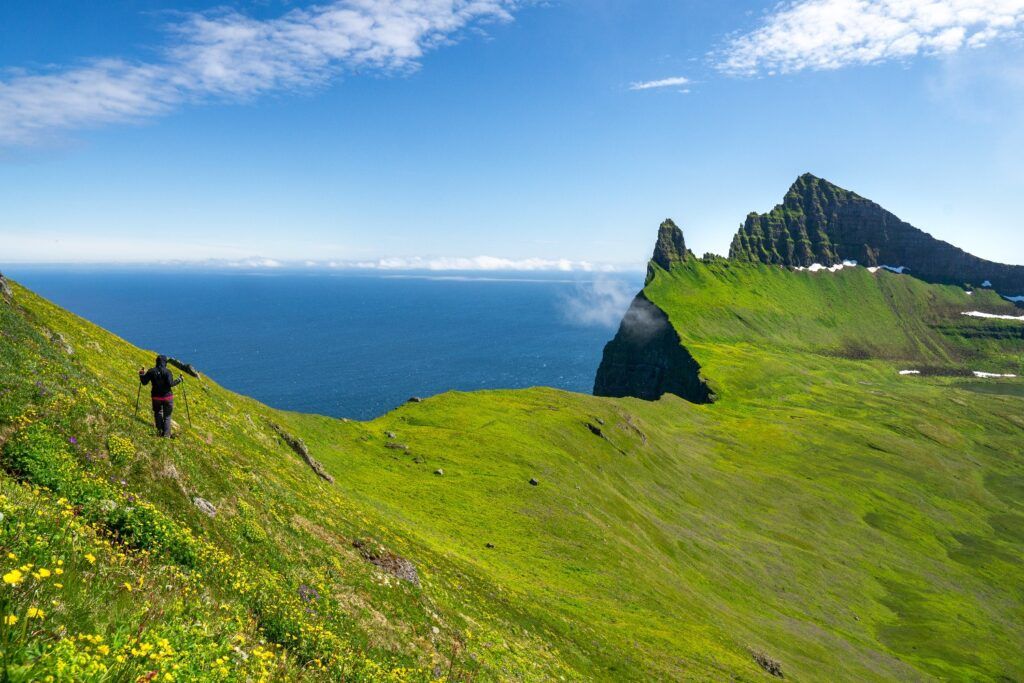
Rauðasandur Beach
Rauðasandur beach is a fascinating find with reddish-pink sand that offers a striking contrast against the surrounding blue sea. The beach is several kilometres long, perfect for a peaceful walk and excellent photos. Low tide reveals a seal colony near the beach, which you must admire from a distance.
The roads leading to the beach are challenging, so a 4×4 vehicle is recommended or drive carefully if you have a regular car. Check tide times to make the most of your trip, especially for photography enthusiasts. The peculiar colour and large expanse of Rauðasandur make it a unique Icelandic beach, a haven of relaxation and exploration.
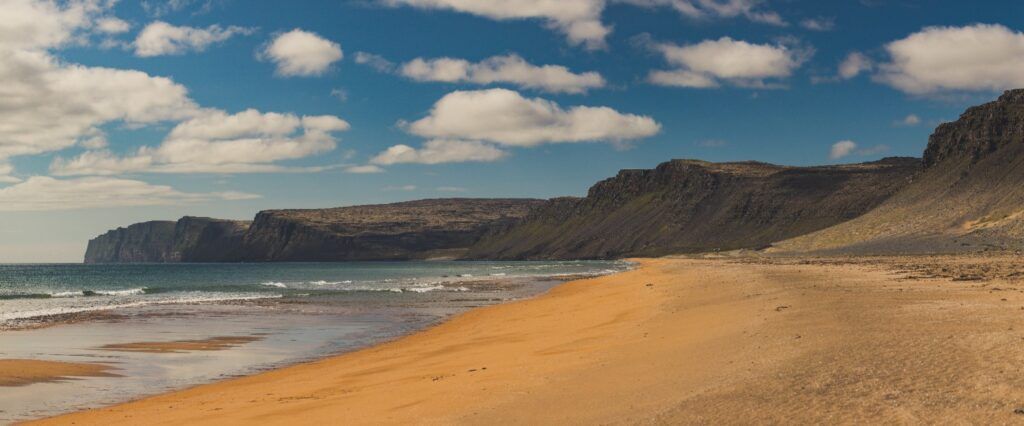
Westfjords towns and gems: getting the local experience
The human dimension of the region greatly enhances your experience. Towns and villages reveal the richness of Icelandic culture, history, and gastronomy. The regional capital, Ísafjörður, is a charming town where a bustling local atmosphere and tales of centuries past converge with fantastic culinary offerings.
Enjoy a seafood meal in one of the town’s restaurants or cafés, sampling wonderful fish like cod or langoustine. Ísafjörður also serves as the departure point for Hornstrandir tours and kayaking. The town’s lovely streets, colourful houses, and picturesque harbour make it worthwhile to stay during your explorations.
Move beyond Ísafjörður, and charming fishing villages such as Bolungarvík or Suðureyri provide visitors with great local immersion. Bolungarvík has an excellent museum on fishermen’s experiences and traditional boat construction, called the Ósvör Maritime Museum. Nearby, Suðureyri focuses on responsible eco-tourism, organic fisheries, and fish gastronomy. Known for its sustainable approach, it is a great place to learn about current Icelandic culture on the coast.

Hot Springs
Hot spring bathing is a good opportunity to mix with local Icelanders. Hellulaug is almost a feature now of the fjord area and well worth a quick soak. For those who prefer developed areas where they can sit and enjoy the local plants, there are geothermal pools.
Actions and adventures: hiking, kayaking, and wildlife spotting
Above all else, the Westfjords are a place for the outdoors. This is probably the most remote and untouched corner of Iceland. The coastline is craggy, the mountains are steep, and the fjords are still. The landscape can easily be approached as gently or harshly as you please. But it is in Hornstrandir that man can truly run wild.
Many Iceland tours offer day hikes, which, when travelling off the Ring Road, can often leave you in a state of peace with the world. A walk near Dynjandi waterfall includes waterfalls, fjords, and mountain views. When visiting Ísafjörður, a walk in these fjords is sure to be a highlight. Secret lookout points, lakes, and views over Ísafjörður are the reward. Expect few other travellers to be seen – make sure you are carrying your own detailed trekking map and check the weather, as it changes often.
Kayaking in the fjords is a great way for travellers to truly appreciate the serenity of this part of western Iceland. An open fjord will allow you to take in the full 360-degree mountain view, and even with a small wind, there will be the excitement of white water. The few fjords in this region near Ísafjörður and Arnarfjörður are well known, and seals are plentiful. Sightings of birds take place with frequent bird sightings throughout the paddle, with the solitude of the place becoming clear the further from civilization you float.
The travelling wildlife is limited to birds in the fjords, but there are still opportunities to spot seals near Rauðasandur Beach, Þingeyri, and Siglunes. Arctic foxes are more difficult to spot. Hornstrandir remains the only place to see Arctic foxes with any regularity. Depending on the time of year, you may also run into reindeer or discover the ground-nesting places of the birds.
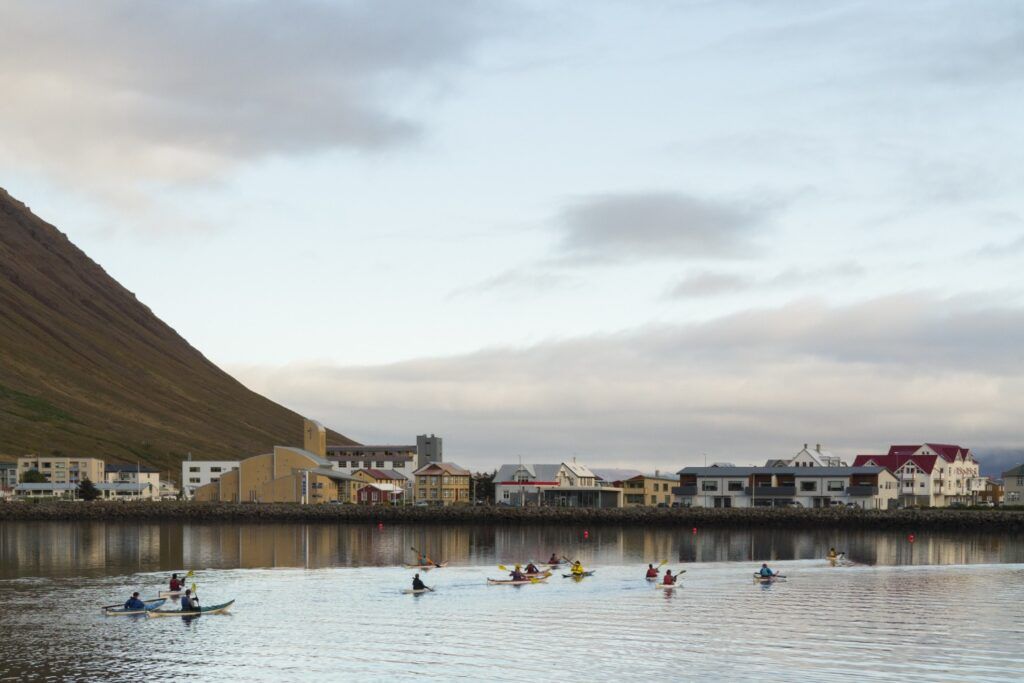
Practical guide: navigating the Westfjords like an insider
Getting there & recommended duration
Access is possible via domestic flight to Ísafjörður or by car/ferry. The Baldur ferry crosses Breiðafjörður to Brjánslækur, providing car access from the south. We recommend planning for 3-5 days to fully experience the main attractions without rushing.
Driving & road conditions
Driving in the region is more complex than elsewhere due to gravel roads and tall mountain passes. The roads are manageable, with no river crossings. Pace will be slower, with gravel tracks, steep inclines, and mountain snow lingering until June. A 4×4 is optional but highly useful for confidence on narrower gravel roads or side tracks leading to remote locations.
Best time to visit
Timing matters: summer (June–August) is the best time to visit. Roads are open, services run fully, and wildlife, including puffins, is active. Other seasons present obstacles like snow, closed roads, and limited facilities. For safety and experience, the Westfjords should be explored in summer. For more, check out our guide to the best time to visit Iceland overall.
Packing & logistics
Pack for changeable weather: layers, waterproof and windproof outer layers, sturdy waterproof hiking boots, gloves, hats, and insect protection. Bring a refillable water bottle and a soft daypack. Our ultimate Iceland packing list provides further details.
Accommodation options are limited. Book in advance, especially near Ísafjörður and Patreksfjörður. Petrol stations are sparse, so stock up on groceries. Mobile service is limited; download offline maps and save your accommodations and tours for offline access. A well-planned Westfjords itinerary is key to a smooth trip.
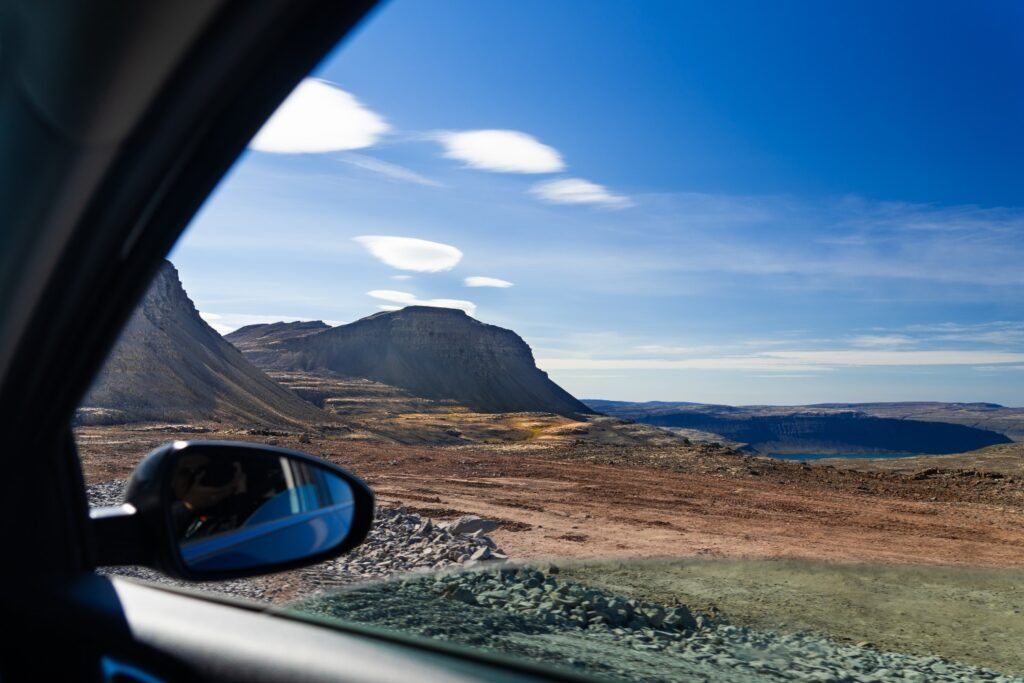
Is adventure calling? Your Westfjords journey awaits!
The sparsely populated Westfjords are for travellers who love a challenge, raw beauty, and isolation. Hiking near Dynjandi, kayaking beside seals, and visiting Látrabjarg cliffs with puffins offer adventure at every turn. Explore Ísafjörður town and other villages for local culture, history, and cuisine. Adventure, history, culture, and puffins are all contained within this remote peninsula.
For organised travel, see our group trips to Iceland for planning and execution help. Experience the iconic highlights on a guided organised group trip exploring Iceland’s Golden Circle, South Coast, and Jökulsárlón.
The Westfjords combine mountains, fjords, rivers, and cliffs with culture and history. Travelling here requires effort, but the outcomes—solitude, stunning views, and breathtaking experiences—are unparalleled. Westfjords attractions provide authentic adventures, natural wonders, and local lifestyles. After visiting, you’ll know this isn’t just another place—it’s Iceland’s ultimate wilderness experience.
